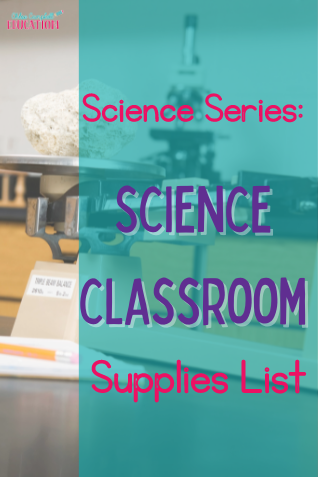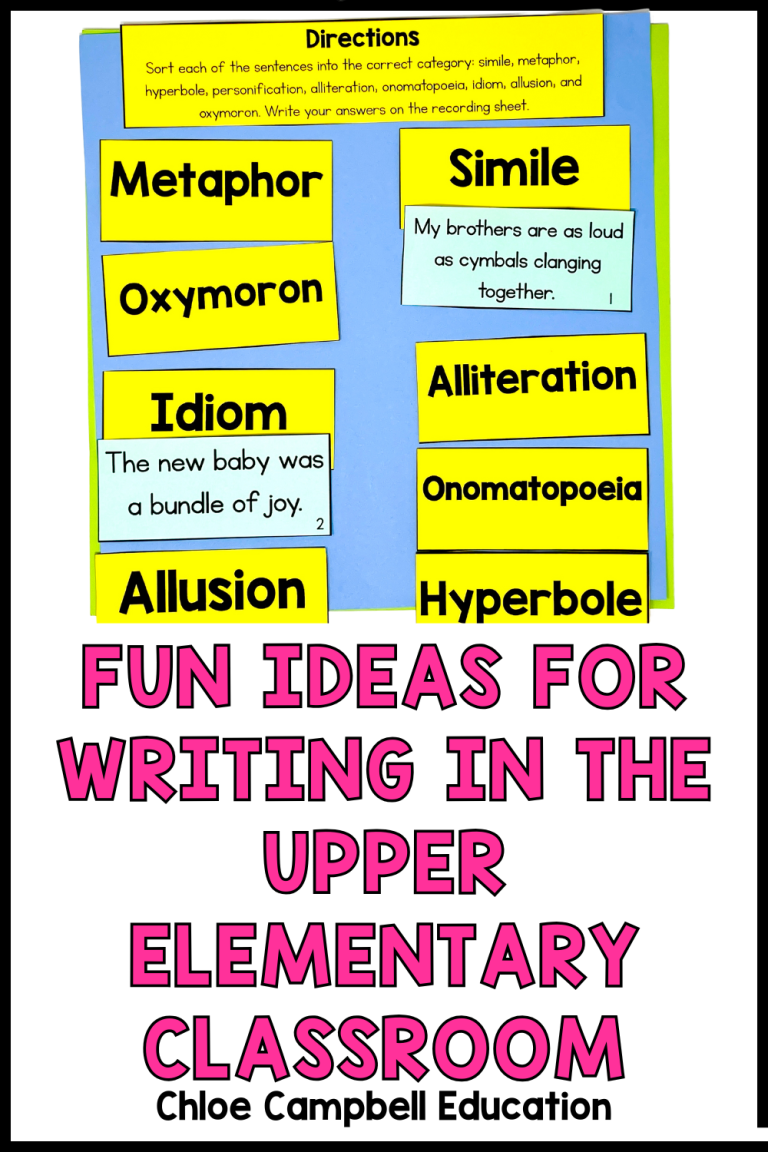5th Grade Science Standards: One Resource To Cover All Prep

Most teachers focus on math and reading around test prep time – so it’s understandable that students struggle with their 5th grade science standards.
There’s never enough time in a day, and the science block is one that often gets cut.
Are your students ready for the their standardized test?
I know that it’s hard enough to find entire science curriculum.
So once it’s time for annual assessments, it can be tricky to put together review materials that are cohesive and standards-aligned.
And even if you do find something that will make them better-prepared, you can’t always guarantee that it will be fun and engaging for your students.
It’s definitely a challenge – and I knew I wanted to do something about it.
So I’ve created just the thing!
If you’re in a rush today, you can grab it here:
➡️ Click here to learn more about this resource!
Or, if you’re here for test prep ideas and inspiration, then keep reading!
Learn more about Chloe and her teaching philosophy by clicking here.
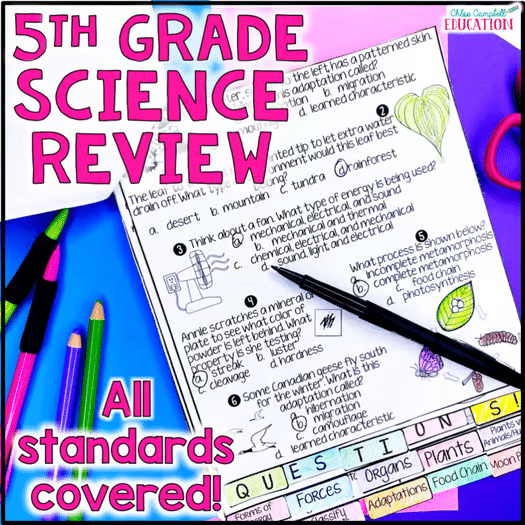
Why a Comprehensive 5th Grade Science Review Matters
Sometimes, we need a pep talk – and to be reminded why review is so important.
It’s easy to ask ourselves, “Why is it it even important to cover the 5th grade science standards?”
To answer that, we need to go back to why science is important.
Why We Learn Science
Learning science goes beyond memorizing facts or passing a test—it’s about understanding the world around us and fostering a sense of curiosity that can shape how we think and interact with our environment.
In 5th grade, students dive into concepts that help them make real-life connections, like the water cycle, ecosystems, and the basics of physics through force and energy.
They’re not just learning about the different types of rocks or the phases of the moon; they’re exploring how weather patterns affect their lives, why recycling matters, and how energy is used in everyday things.
Science teaches students to ask questions, think critically, and experiment with ideas—skills that go far beyond the classroom.
By mastering these foundational standards, students gain a toolkit for lifelong learning, and they start to see that science is more than just a subject—it’s a way of seeing the world and making informed decisions.
The Benefits of Practicing Science
Practicing science is about discovery, hands-on learning, and learning how to think critically.
When students actively engage in science activities, they’re not just absorbing information—they’re practicing skills like observation, data analysis, and problem-solving.
In 5th grade, this can mean performing simple experiments on weathering and erosion, observing plant growth in different environments, or creating models to understand energy transformations.
These activities encourage students to think like scientists: to question, test, and draw conclusions based on evidence.
Practicing science also builds resilience and adaptability, as students learn that trial and error is part of the process.
For example, when they create a closed circuit and it doesn’t work right away, they learn to troubleshoot and keep trying until they succeed.
These are powerful lessons that stick with them, helping them to approach challenges with a scientific mindset and preparing them to tackle more complex ideas in the years to come.
How Science Makes Students Better Readers
Science can be a secret weapon for helping kids become better readers, too.
In 5th grade, students are learning a lot of new, science-specific vocabulary—think words like “condensation,” “erosion,” and “metamorphosis”—and they need to really dig into these terms to understand what they mean.
This is where their reading skills start to kick in big time!
As they read science texts, students practice picking out main ideas, using context clues, and even making inferences. It’s like a two-for-one: they’re learning science and building reading skills at the same time.
Plus, science brings in all kinds of informational texts that ask students to follow steps and pay attention to cause and effect.
When they read about the water cycle, for example, they’re following a process from start to finish, which strengthens their sequencing skills.
They’re also working with diagrams, charts, and tables, which is perfect for building visual literacy.
And as they figure out how to summarize what they’ve learned or ask questions about it, they’re becoming better readers without even realizing it!
Science is a great way to keep reading fun and purposeful across the curriculum.
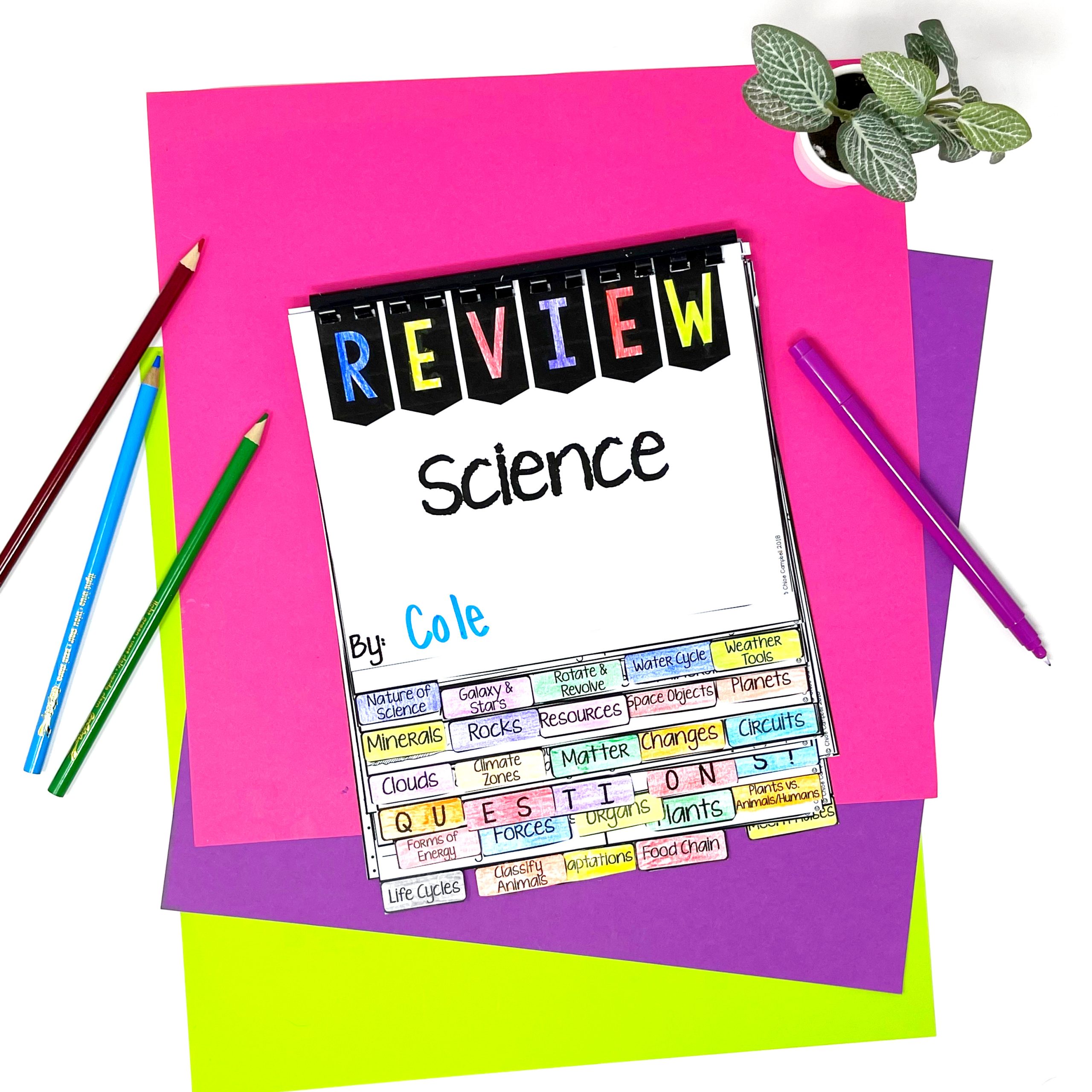
How This Relates to Review
Science is unique in the fact that it’s both a subject AND a practice.
Students need the content, and opportunities to authentically engage with it.
But we know that to truly learn something, we often need to hear it more than once.
Repetition is everything – which means students need the review!
Sadly, most students don’t have a curriculum with matching test prep for the 5th grade science standards.
So that’s why I’ve made resources to support you!
Test Prep is an Opportunity for Spiral Review
I know your time as stretched as a teacher.
You’re being pulled in so many different directions!
But test prep can really double as spiral review – and spiral review makes what they’ve learned stick.
Benefits of Spiral Review
- Retention Boost
Studies show that students who engage in regular spiral review retain 80% more information by the end of the school year compared to those who don’t (Educational Research Quarterly). - Increased Confidence
Schools that implement spiral review see a 65% increase in student confidence on assessments, as students regularly revisit and reinforce material (Journal of Curriculum Studies). - Improved Test Scores
On average, students who use spiral review perform 25% better on end-of-year standardized tests (Center for Education Policy Research).
Spiral review is one of those tools that feels like magic when it comes to helping students remember what they’ve learned all year.
By regularly cycling back to previous topics, students get more chances to practice and connect concepts over time, which leads to stronger retention.
This approach also helps build confidence—when students see they remember something from weeks or months ago, it’s a big win!
Plus, when test time rolls around, they’re not cramming new information but reviewing what they already know, which can lead to higher scores and a deeper understanding overall.
Spiral review makes it easier to keep learning fresh and fun!
How Spiral Review Relates to Standardized Test Prep
Preparing 5th graders for standardized science tests can be a real challenge, especially with all the content they’re expected to remember by the end of the year.
If you’re anything like me, you’re probably juggling a million things at once and need a resource that’s easy to use, covers all the bases, and—most importantly—keeps students engaged.
➡️ That’s where the 5th Grade Science Review Flip Book comes in.
With all the standards packed into one organized, easy-to-navigate flip book, you’ve got everything you need for test prep in one place.
It’s designed to help students feel prepared and confident, whether they’re working on science standards from the start of the year or brushing up before the big test.
And with three different versions to choose from, it’s flexible enough to meet the needs of every student.

Creative Ideas to Use the Flip Book Throughout the School Year
Many teachers wait until the end of the school year to start test prep.
But if you bring spiral review into your teaching, this is something you can do all year long!
This also makes it feel less heavy, burdensome, and stressful during that long stretch between spring break and summer break.
Here are some ideas to help you use this flipbook throughout the year:
Unit-By-Unit Review
As you complete each unit, have students fill in the corresponding page in the flip book. This creates a built-in review process that keeps prior concepts fresh, rather than waiting until the end of the year. Students can even add their own drawings or notes to make each section personal and engaging.
Weekly Spiral Check-Ins
Dedicate one day a week (such as “Science Friday”) to reviewing a few topics from the flip book, even if you haven’t reached those standards yet.
This consistent revisiting builds retention and allows students to see how different topics connect over time.
Pre-Test “Open Flip Book” Quizzes
Before a unit test, give students an “open flip book” quiz where they can use completed sections to answer questions.
This reinforces how the flip book can be a practical study tool and helps students feel more confident with the material.
Peer Teaching Sessions
Pair students up to teach one another sections of the flip book.
Each student can take turns explaining a page or concept, promoting collaborative learning and reinforcing their understanding through teaching.
Interactive Study Stations
Set up “study stations” with different flip book pages or topics at each one. Students rotate through stations, engaging in activities or answering questions related to that section.
This method is excellent for end-of-year review and keeps test prep active and engaging.
Daily Warm-Ups with Mini Challenges
Start each science lesson with a quick question or challenge based on a page from the flip book.
For example, “Name one difference between chemical and physical changes” or “Explain one way clouds form.”
These warm-ups keep concepts fresh and let students apply what they’ve learned in bite-sized, manageable pieces.
Test Prep Game Day
Turn the flip book into a game! Use it for a “Science Jeopardy” or “Science Relay” where students answer questions from different sections.
This can boost enthusiasm and make test prep feel like a fun challenge instead of a stressful review.
Reflection and Goal Setting
At the end of each major unit or quarter, have students look back through their flip book and set goals or reflect on areas they feel confident in and those they want to improve.
This gives them ownership of their learning and motivates them to fill in any gaps in understanding before test time.
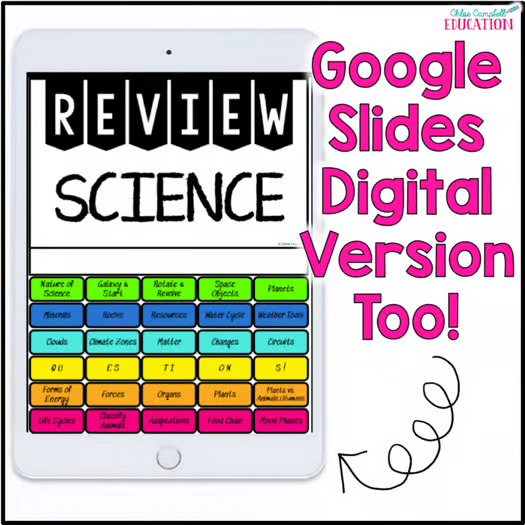
Key 5th Grade Science Topics Covered
The 5th Grade Science Flip Book covers all essential science standards, providing a comprehensive review across core areas in Earth, Life, and Physical Sciences.
Students explore Earth and Space concepts, like the water cycle, galaxy structures, and planetary rotation.
Life Science topics introduce them to ecosystems, life cycles, plant and animal adaptations, and food chains, where they examine relationships between organisms and their environments.
Physical Science dives into properties of matter, energy types (mechanical, light, and thermal), and basics of electricity, including circuits, conductors, and insulators.
By reviewing these key areas, students strengthen their understanding of complex processes and develop the foundational scientific skills they’ll need in middle school and beyond.
All of these concepts build on each other, too – so you’re never truly reviewing one topic in isolation!
More 5th Grade Science Resources for You
If you need more resources related to help you teach everything covered by the 5th grade science standards, I have a shop full of things you’ll love!
Easy Science Experiments Bundle
These engaging science experiments use simple household items, making them easy to set up and prepare. Perfect for introducing science lab rules, reinforcing lab procedures, modeling the scientific method, or simply adding an element of hands-on fun to any day!
Each experiment includes step-by-step instructions and a recording sheet where students can document their observations.
➡️ Check out the preview to see exactly what’s inside!
This bundle includes 10 themed sets of activities for a total of 63 unique, hands-on science experiments that will keep students engaged all year long. Purchasing this bundle at the listed price gives you 15 extra experiments at no additional cost!
Complete 5th Grade Science Curriculum
If you don’t have any 5th grade science curriculum, or if you’ve been piecemealing resources from a ton of diferent places – then you need this!
I designed this with you in mind – and everything covers the 5th grade science standards.
➡️ Click here to learn more about this affordable, complete curriculum!


